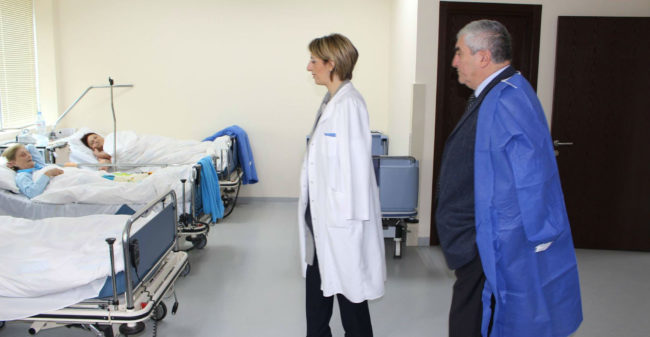

 Georgia’s Minister of Labor, Health, and Social Affairs, Davit Sergeenko, announced a ‘second wave’ of public universal healthcare on 16 March, which would provide differentiated packages for universal healthcare users. The proposals would deprive roughly 32,000 high income citizens of medical services currently covered by the universal healthcare programme.
Georgia’s Minister of Labor, Health, and Social Affairs, Davit Sergeenko, announced a ‘second wave’ of public universal healthcare on 16 March, which would provide differentiated packages for universal healthcare users. The proposals would deprive roughly 32,000 high income citizens of medical services currently covered by the universal healthcare programme.
Sergeenko outlined several categories of probable healthcare users:
- The target group, consisting of: people with disabilities, socially vulnerable people (as defined by the Social Services Agency), children under five, students, teachers, and pensioners. The group consists of roughly 1.7 million Georgian citizens. The group will maintain the current coverage of universal healthcare services and will continue to be able to benefit from universal healthcare services and private insurance packages simultaneously.
- Citizens with high income rates would be divided into two sub-categories:
- Citizens with incomes of more than ₾40,000 ($16,000) a year — around 32,000 people — will no longer receive medical services under the universal healthcare programme, but will still benefit from some programmes (hepatitis C treatment, maternity services, etc.).
- Citizens with annual incomes of ₾10,800–40,000 ($4,300-16,000) — around 300,000 people — will have 90% of their costs covered for urgent hospitalisation. For planned hospitalisation, where the cost of treatment exceeds ₾1,000 ($400), 70% of the costs will be covered. Georgian citizens in this category will have to choose between private insurance and the public healthcare system.
- Citizens with low or irregular incomes:
- Citizens with monthly incomes of less than ₾900 ($360) and self-employed citizens — around 1.2 million people.
- Citizens on the margins of social vulnerability (as defined by the Social Services Agency) — around 102,000 people.
- Children aged 6–18 — around 503,000 people.
Citizens with low or irregular incomes will continue to be fully covered for urgent hospitalisation, and will still be able to benefit from universal healthcare services and private insurance packages simultaneously. For planned hospitalisation they will be fully covered if the cost of treatment exceeds ₾500. They will receive 50% coverage for outpatient care.
According to the minister, offering differentiated healthcare packages was first envisioned in March, after the universal healthcare programme was first renewed.
In Georgia, healthcare is provided by both public and private healthcare systems. After the collapse of Soviet Union, Georgia abolished its universal healthcare system, leading to mass privatisation of clinics and a shift to a market-dominated system.
After the change of government in 2013, a universal healthcare system was reintroduced, which started providing healthcare to, according to the Georgian Parliament and media reports, more than 90% of the population. The programme operates alongside a system of private medical facilities and private insurers.
The programme is considered by many to be the crowning achievement of the Georgian Dream government, and was one of their main pre-election promises in 2012. However, it has faced some criticism for ‘unfair financing’, ‘poor management’ and ‘ineffective control of expenses’.
The programme’s budget has increased annually, from ₾470 million ($190 million) in 2015, to ₾570 ($228) million 2016, and according to Georgia’s 2017 budget, ₾660 million ($264 million) this year.









